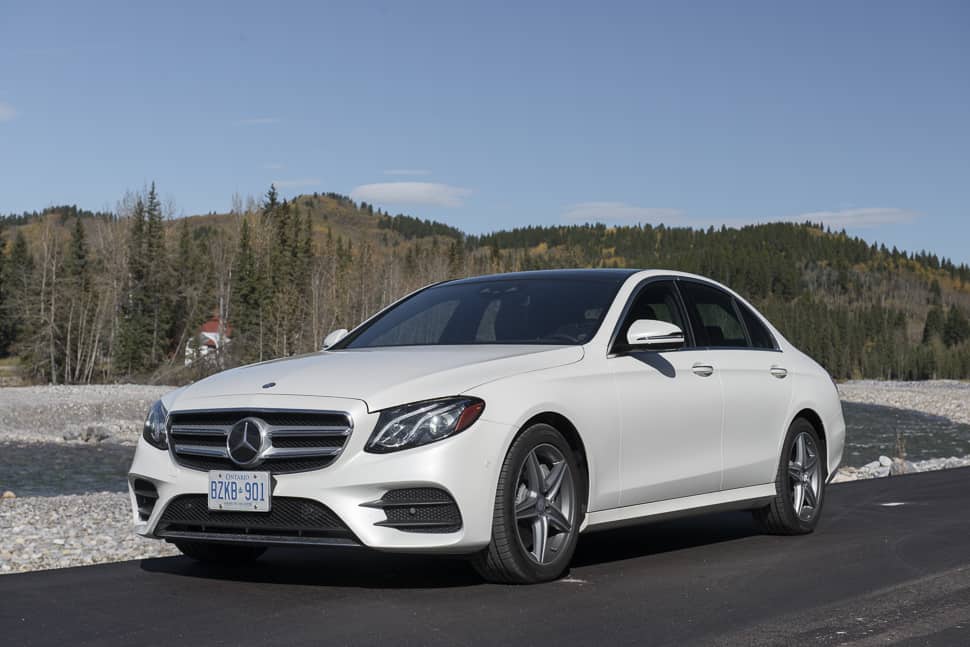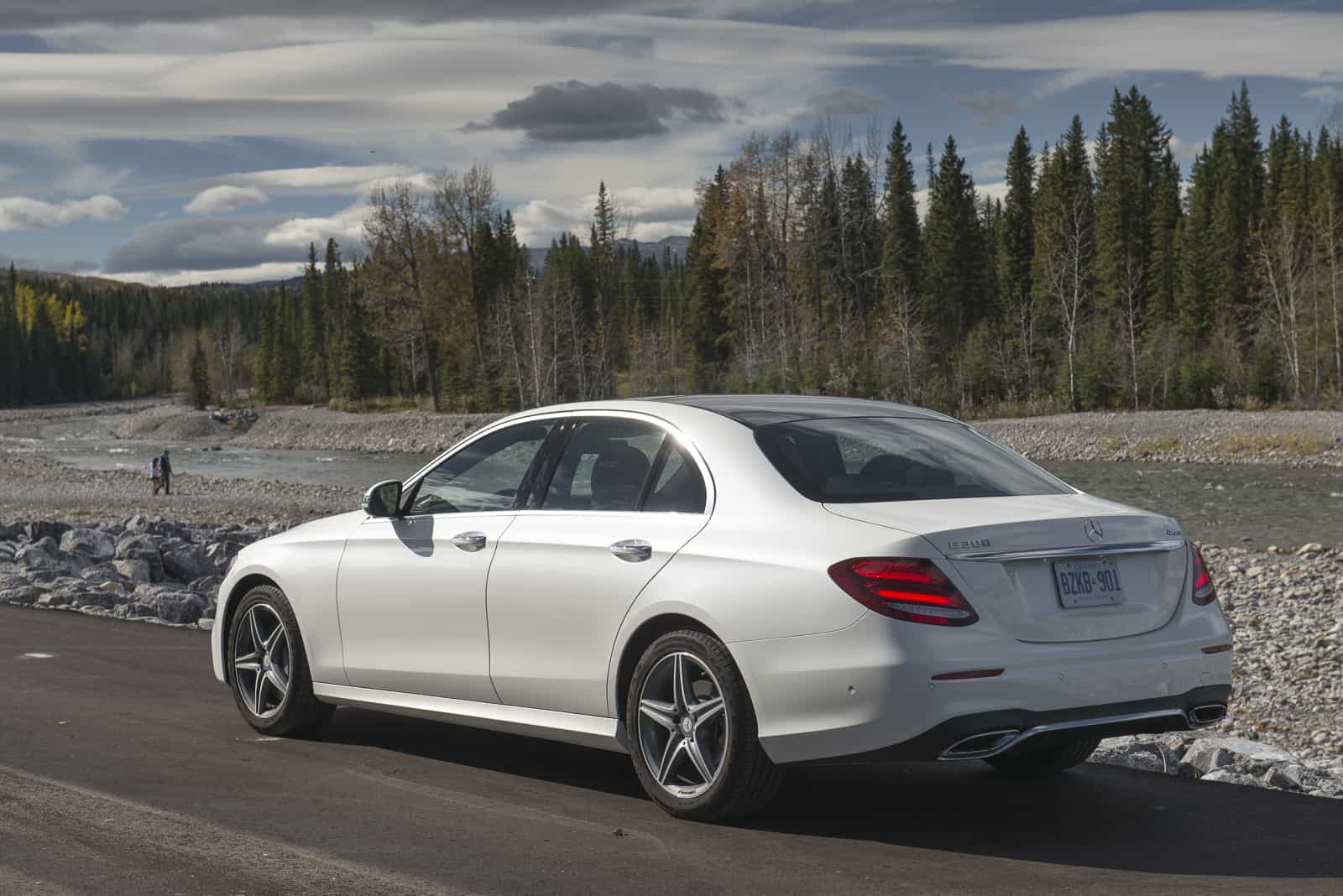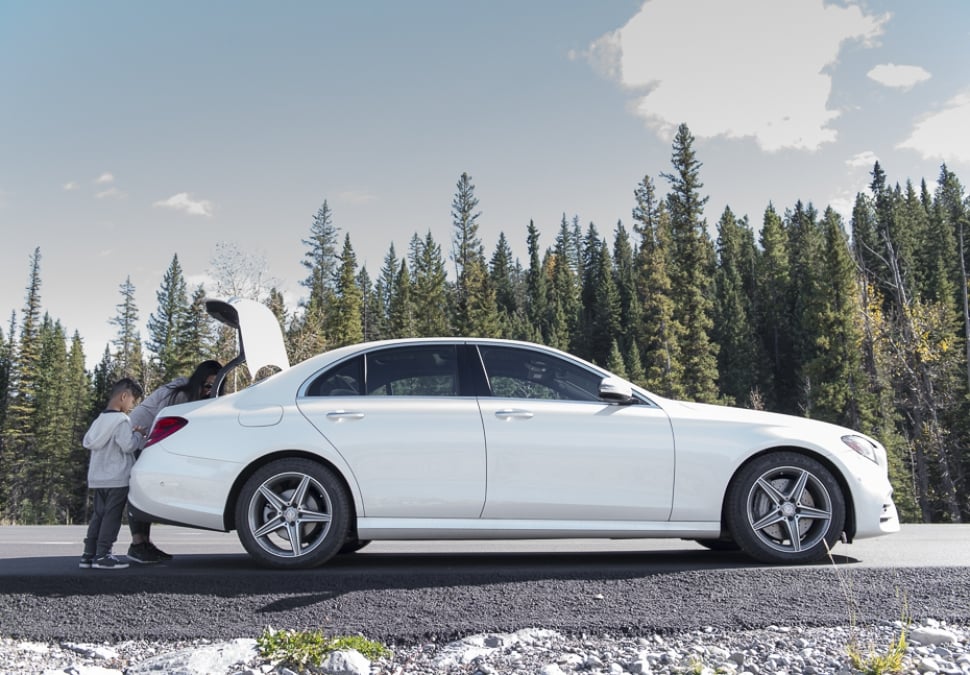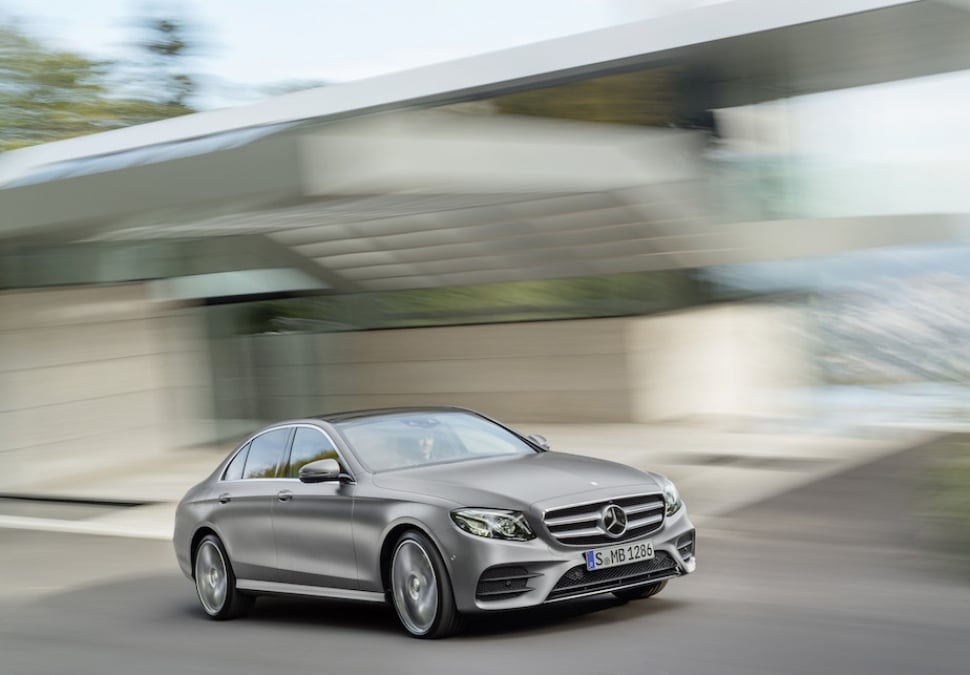The auto industry is in a constant race to the top, with manufacturers tripping over one another to find something that might give them an edge in sales over the competition.
Power and performance used to be big selling points, but if you want proof that the race has changed, take a look at the 2017 Mercedes-Benz E-Class, the 10th generation of this upscale mid-size car.
Entry-level E300 with 2.0L turbo
You might have expected Mercedes to launch this all-new car in one of its V6-powered trims: the E 400 and E 43 AMG share a 3.0L turbocharged engine that makes 329 hp and 396 hp respectively. Instead, the company opted to kick things off with the entry-level E 300, powered by a 2.0L turbo four-cylinder making just 241 hp and 273 lb-ft of torque.

It’s an approach that makes sense: The E 300 will probably be the most popular version of this car. But even more telling is that, at a late-August first drive event in Ottawa, Mercedes-Benz Canada barely mentioned the new E-Class’s drivetrains, focusing instead on a raft of active safety features and driver aids that the company says makes its new mid-range sedan a “masterpiece of intelligence.”
Drive Pilot
There are the features we’ve come to expect in higher-end cars, like adaptive cruise control, lane keeping assist, and automatic emergency braking. Benz goes a couple of steps further here, with its Drive Pilot suite, which adds an automatic lane-change system to its adaptive cruise setup that will take the car around slower vehicles with just a tap of the turn signal lever.
Here’s great writeup from Autoblog on how Drive Pilot works.
With Drive Pilot at work, the car will automatically come to a complete stop, with hazard lights flashing, if the driver removes their hands from the wheel and doesn’t respond to repeated prompts to retake control.
Add in a Parking Pilot function that will park the car and drive it out again, and you’ve got just about the closest thing you’ll find to a vehicle that can, in theory, handle most common driving situations all on its own. The self-parking feature isn’t perfect, though: on one parallel parking attempt, the car’s proximity sensors detected a non-existent obstruction and cancelled the maneuver, leaving us to finish the job.
Indeed, cars still need drivers, so let’s talk about what this car is like for those who aren’t quite ready to surrender control to the computers.

Power: Under the E300’s hood
The 2.0L engine isn’t massively strong, but it makes good low-end torque that gives the impression of a larger motor in city driving. And if a four-cylinder seems out of place in an upscale car, consider that BMW, Audi, Lincoln, Acura and Cadillac all start their upscale mid-size cars out with 2.0L turbo motors.
Boosting fuel economy is the name of the game, but there are many, like us, who miss the more mellifluous sound of a V6. To that end, Benz fits the E 300 with an electronic engine sound enhancer whose volume can be adjusted through the dynamic select drive mode system. That system also tailors throttle and transmission response to the driver’s wishes and changes suspension settings in cars with the optional air-ride system.
A new nine-speed transmission is a good fit with this little engine, making good use of its power. In Canada, all E-Class variants come standard with Mercedes’ 4MATIC all-wheel drive.
2017 Mercedes-Benz E300 Interior

Comfortable heated front seats are standard, and an Exclusive Package adds massaging seats with bolsters that respond to cornering forces to help hold front seat occupants in place; also included there are heated door armrests(!). Front seat ventilation is a stand-alone extra. Other optional niceties include aviation-style front headrests, head-up display, 360-degree cameras, LED headlights and high-beam assist.
Technology is what Benz says makes the new E-Class special, so cars fitted with the Premium Package (which it predicts something like 95 percent of buyers will choose) add passive keyless entry, backup camera, Parking Pilot and a sweet customizable digital gauge cluster.
Boosting fuel economy is the name of the game, but there are many, like us, who miss the more mellifluous sound of a V6. To that end, Benz fits the E 300 with an electronic engine sound enhancer whose volume can be adjusted through the dynamic select drive mode system.
To us, that last item is the high-tech centrepiece of the car, switching between a traditional-looking gauge display, replacing the tachometer with a navigation screen, and placing a digital speedometer front-and-centre, flanked by trip and navigation information. Audi’s virtual cockpit is cooler, but this is a very modern touch in a car that has traditionally felt a bit old-fashioned.
The new four-cylinder engine modernizes the E-Class’s fuel consumption estimates, too, which fall to 10.8/8.1 L/100 km (city/highway), from 11.9/8.2 in the old E 300, which used a non-turbo V6 whose output was similar to that of the new 2.0L.

Exterior Styling
Benz offers the E-Class with two styling packages. The base car comes dressed in a sporty AMG-influenced body with 19-inch wheels and a bold grille around a huge Mercedes three-pointed star logo. A luxury styling pack is a no-cost option and brings 18-inch wheels and a less extroverted front end that puts the badge on an old-school hood ornament. For what it’s worth, we think the standard car looks better, and will most likely appeal to buyers at the younger end of the E-Class demographic.
2017 E300 Pricing
E 300 pricing starts at $61,200, but most cars will go out the door for at least $66,300, thanks to the $5,100 tag for the desirable Premium Package. The E 400, which will reach showrooms shortly, starts at $69,400. AMG-tuned E 43 models will go on sale closer to the end of 2016, and pricing will be announced around that time.
Takeaway: is the 2017 Mercedes-Benz E300 worth it?
Our initial sense, ironically, is that just as Benz has created a car that can nearly drive itself, it has also designed an E-Class that promises to be more engaging to drive than any before it. With truly autonomous vehicles still years away, we’d call that a good thing.

2017 Mercedes-Benz E300 Specs:
- Engine: 2.0L four-cylinder, turbocharged; 3.0L V6, turbocharged
- Power (2.0L): 241 hp
- Torque (2.0L): 273 lb-ft
- Power (3.0L): 329 horsepower (E 400)
- Torque (3.0L): 354 pound-feet (E 400)
- Power (3.0L): 396 horsepower (E 43)
- Torque (3.0L): 384 pound-feet (E 43)
- Transmission: Nine-speed automatic
- Brakes: Four-wheel disc
- Steering: Electric power-assist rack-and-pinion
- Suspension: Independent multi-link (front and rear)
- Fuel economy, ratings (l/100km, city/highway): 10.8/9.1 (2.0L)
- Price: $61,200 CAD, starting MSRP




